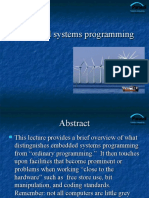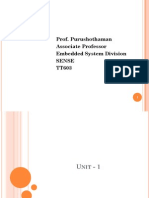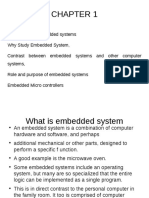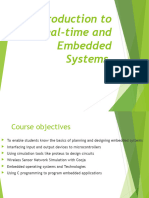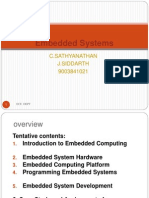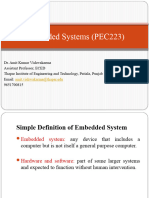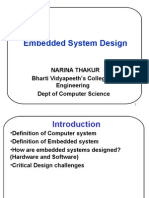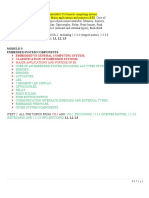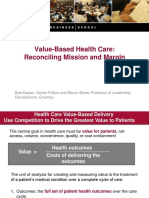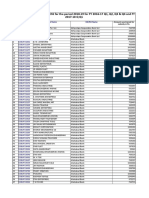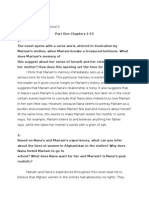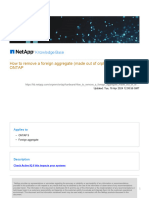0% found this document useful (0 votes)
72 views38 pagesEmbedded System and Development: Rajani Bhandari Senior Project Manager HCL Technologies
The document provides an overview of embedded systems development. It discusses how embedded systems differ from PCs in having specific, constrained functions. It outlines design challenges like cost, size, performance and power constraints. Examples of embedded applications like digital cameras and mobile phones are provided. The software development life cycle and architecture of embedded applications are described, including hardware, operating system, and application layers. Guidelines for embedded application development focus on memory, user interface, power, and reset considerations. Key rules for coding emphasize maintainability, reliability and efficiency.
Uploaded by
PRABHAKARAN.D MEC-AP/MCCopyright
© © All Rights Reserved
We take content rights seriously. If you suspect this is your content, claim it here.
Available Formats
Download as PDF, TXT or read online on Scribd
0% found this document useful (0 votes)
72 views38 pagesEmbedded System and Development: Rajani Bhandari Senior Project Manager HCL Technologies
The document provides an overview of embedded systems development. It discusses how embedded systems differ from PCs in having specific, constrained functions. It outlines design challenges like cost, size, performance and power constraints. Examples of embedded applications like digital cameras and mobile phones are provided. The software development life cycle and architecture of embedded applications are described, including hardware, operating system, and application layers. Guidelines for embedded application development focus on memory, user interface, power, and reset considerations. Key rules for coding emphasize maintainability, reliability and efficiency.
Uploaded by
PRABHAKARAN.D MEC-AP/MCCopyright
© © All Rights Reserved
We take content rights seriously. If you suspect this is your content, claim it here.
Available Formats
Download as PDF, TXT or read online on Scribd
/ 38


